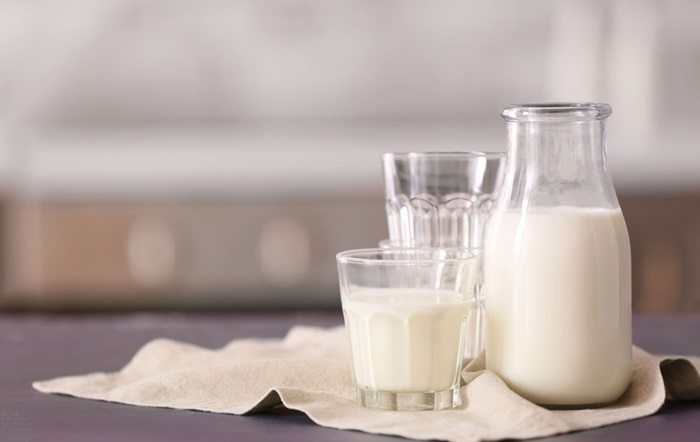Milk, a staple in many diets around the world, has long been associated with health benefits. However, for diabetic patients, the question of whether milk is beneficial or harmful can be complex. This article delves into the nutritional value of milk, its impact on blood sugar levels, and how it fits into a diabetic diet. We will explore the cultural significance of milk, provide detailed guidance on choosing the right type of milk, and offer practical tips for incorporating milk into meals. Whether you’re managing diabetes or simply curious about healthier drink options, this guide will provide valuable insights.
Nutritional Benefits of Milk
Milk offers several health benefits:
High-Quality Protein: Milk is an excellent source of high-quality protein, essential for muscle maintenance and overall health.
Rich in Vitamins and Minerals: It contains vital nutrients such as calcium, vitamin D, and potassium, which support bone health, immune function, and heart health.
Low Glycemic Index: Depending on the type, milk can have a low glycemic index (GI), meaning it causes a slower rise in blood sugar levels compared to high-GI foods.
Hydration: Staying hydrated is crucial for overall health, especially for people with diabetes. Milk provides hydration while offering additional nutrients.
Types of Milk Suitable for Diabetics
Choosing the right type of milk is important for managing diabetes:
Whole Milk: Contains more fat and calories compared to other types of milk. While it provides more energy, it may not be the best choice for those watching their weight or cholesterol levels.
Skim Milk: Fat-free and lower in calories, making it a better option for those looking to reduce calorie intake without sacrificing nutrients.
Low-Fat Milk: Contains less fat than whole milk but more than skim milk. A balanced choice that still provides essential nutrients.
Plant-Based Milks: Almond milk, soy milk, oat milk, and others are becoming popular alternatives. They are generally lower in carbohydrates and calories, making them suitable for diabetics. Ensure they are unsweetened to avoid added sugars.
Impact of Milk on Blood Sugar Levels
Understanding Glycemic Index (GI): The GI measures how quickly a food raises blood sugar levels. Milk typically has a low to moderate GI, depending on the type. For example, skim milk has a lower GI compared to whole milk, making it a better choice for diabetics.
Lactose Content: Milk contains lactose, a natural sugar. Lactose is digested slowly, causing a gradual increase in blood sugar levels rather than a sharp spike. However, some individuals may need to monitor their lactose intake carefully.
Insulin Sensitivity: Certain studies suggest that dairy consumption may improve insulin sensitivity, helping to manage blood sugar levels more effectively. However, individual responses can vary.
Cultural Significance of Milk
Ancient Origins: Milk has been consumed by humans for thousands of years. In ancient times, it was valued for its rich nutrient content and ability to sustain life. Today, it remains a staple in various cultures worldwide.
Symbolic Meaning: In many cultures, milk symbolizes purity and nourishment. It is often associated with motherhood and childhood, representing growth and vitality. Serving milk during gatherings promotes bonding and shared experiences.
Regional Variations: Different regions have their own unique traditions involving milk. For example, in India, milk is used in numerous dishes and beverages, including chai tea. In Scandinavian countries, fermented milk products like yogurt and kefir are popular for their probiotic benefits.
Health and Wellness: Traditional medicine values milk for its ability to support overall health. Modern research confirms that many of the nutrients found in milk promote bone health, immune function, and cardiovascular well-being.
Practical Tips for Incorporating Milk into a Diabetic Diet
Choosing Quality Ingredients: Select fresh and high-quality milk for the best flavor and nutritional value. Look for options that are unsweetened and fortified with essential vitamins and minerals.
Enhancing Flavors: To boost the flavor of your milk-based dishes, consider adding spices like cinnamon or nutmeg. These ingredients can introduce new layers of taste and aroma while providing additional health benefits.
Experimenting with Cooking Methods: While drinking milk is common, don’t hesitate to experiment with cooking methods. Try using milk in soups, smoothies, or sauces for added creaminess and nutrition. Incorporating different types of milk like almond or soy can also add variety.
Meal Planning: Plan your meals carefully to balance milk consumption with other foods. Pair milk with high-fiber foods like whole grains or vegetables to slow down digestion and prevent rapid spikes in blood sugar levels.
Conclusion
In conclusion, milk can be a beneficial part of a diabetic diet when chosen and consumed wisely. By following the steps outlined in this guide, you can enjoy the nutritional benefits of milk while managing blood sugar levels effectively. The combination of high-quality protein, vitamins, and minerals makes milk a valuable addition to any meal. Whether you’re managing diabetes or simply interested in healthier drink options, mastering the art of balancing flavors and nutrients is key. Enjoy the culinary adventure and the health benefits of incorporating milk into your daily routine. Remember, each sip tells a story of cultural richness and personal enjoyment. Embrace the unique qualities of this beverage and discover why it has stood the test of time in promoting wellness.
By exploring the preparation and cultural significance of milk, we honor a tradition that has nourished generations and continues to enrich our dining experiences today. This drink not only delights the palate but also connects us to the rich tapestry of culinary history. Celebrate the vibrant textures and flavors of milk and let it become a staple in your kitchen.
Related topics:


